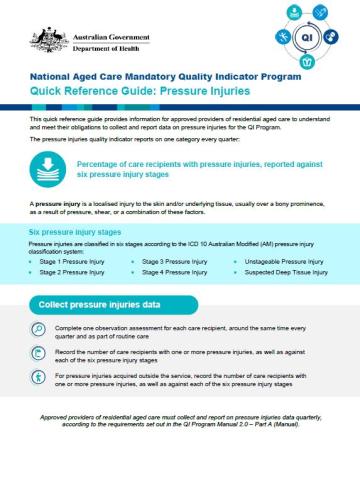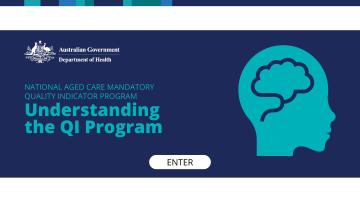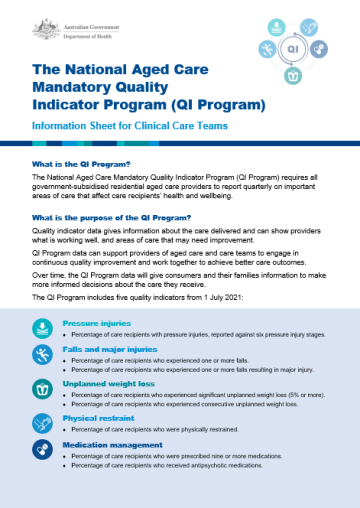Filter results
You can narrow down the results using the filters
Audience
Topics
Our work
Year
81 results
-
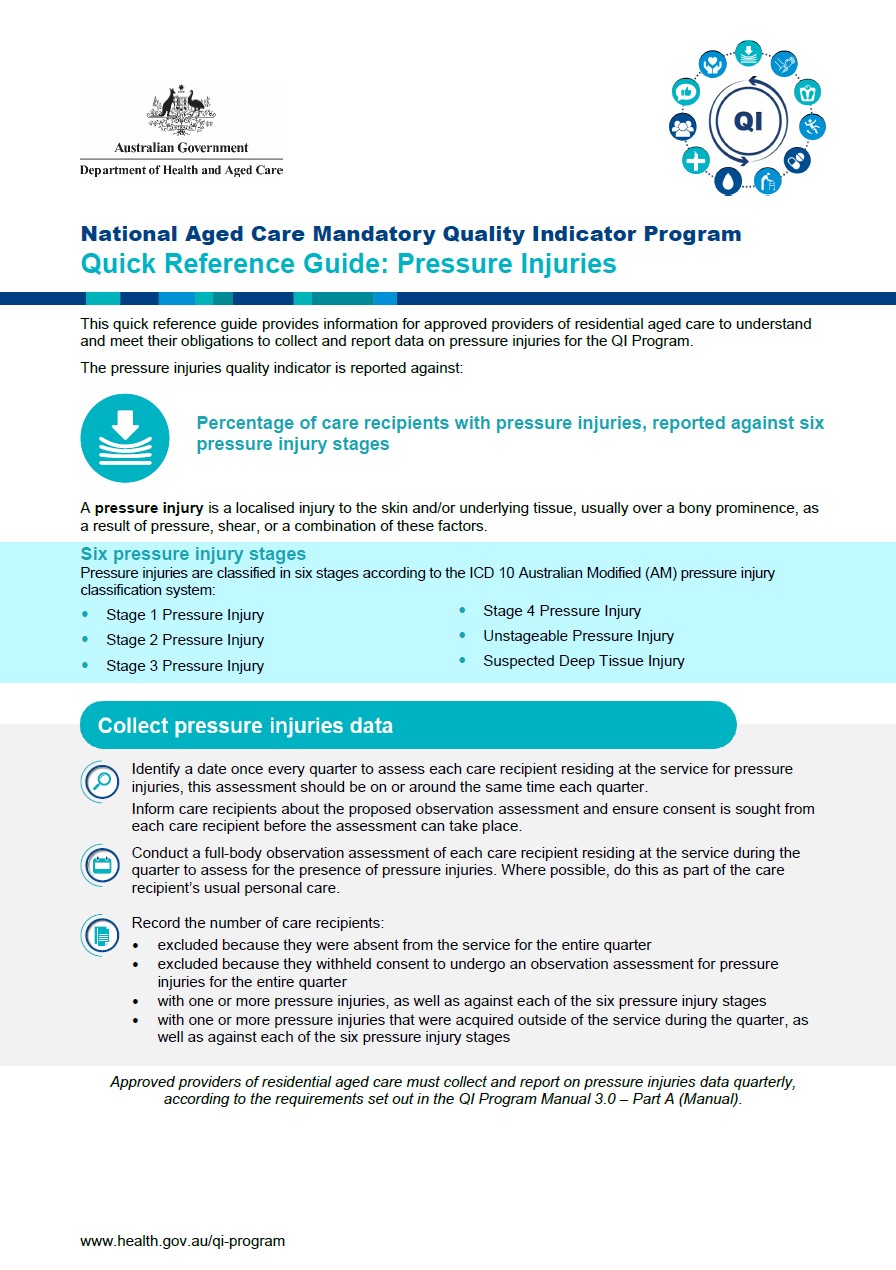
QI Program quick reference guide – Pressure injuries
This quick reference guide provides information for approved providers of residential aged care to understand and meet their obligations to collect and report data on pressure injuries for the QI Program. -
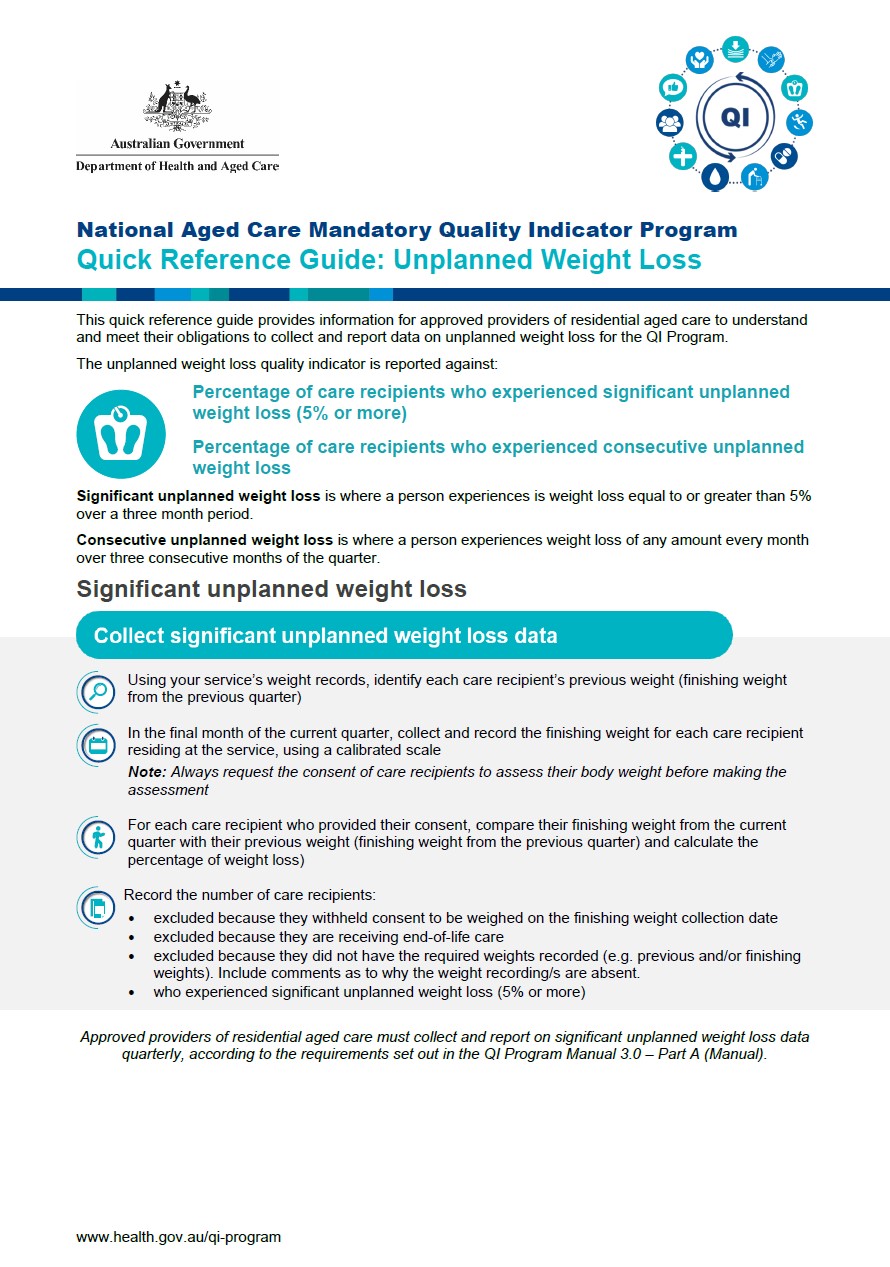
QI Program quick reference guide – Unplanned weight loss
This quick reference guide provides information for approved providers of residential aged care to understand and meet their obligations to collect and report data on unplanned weight loss for the QI Program. -
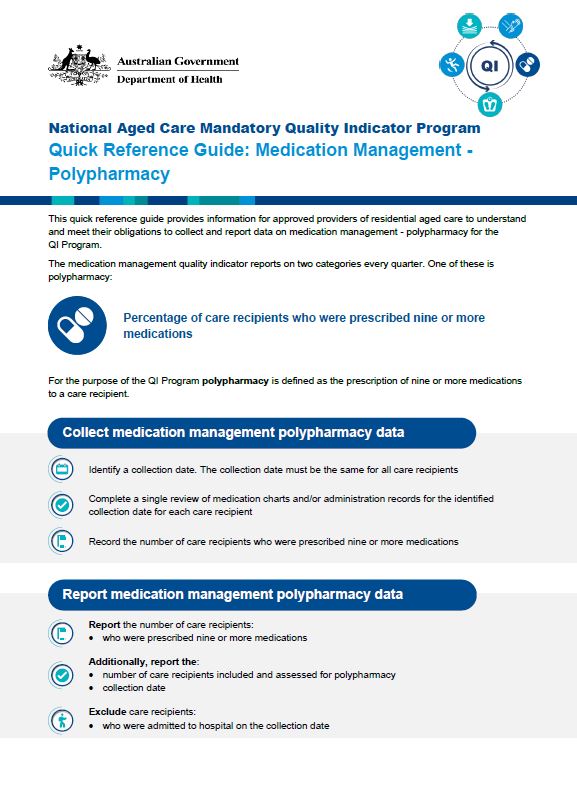
QI Program quick reference guide – Medication management – Polypharmacy
This quick reference guide provides information for approved providers of residential aged care to understand and meet their obligations to collect and report data on medication management – polypharmacy for the QI Program. -
QI Program quick reference guides
These guides are for approved providers of residential aged care services. The quick reference guides provide an overview of each of the quality indicators and include examples of recording data. -
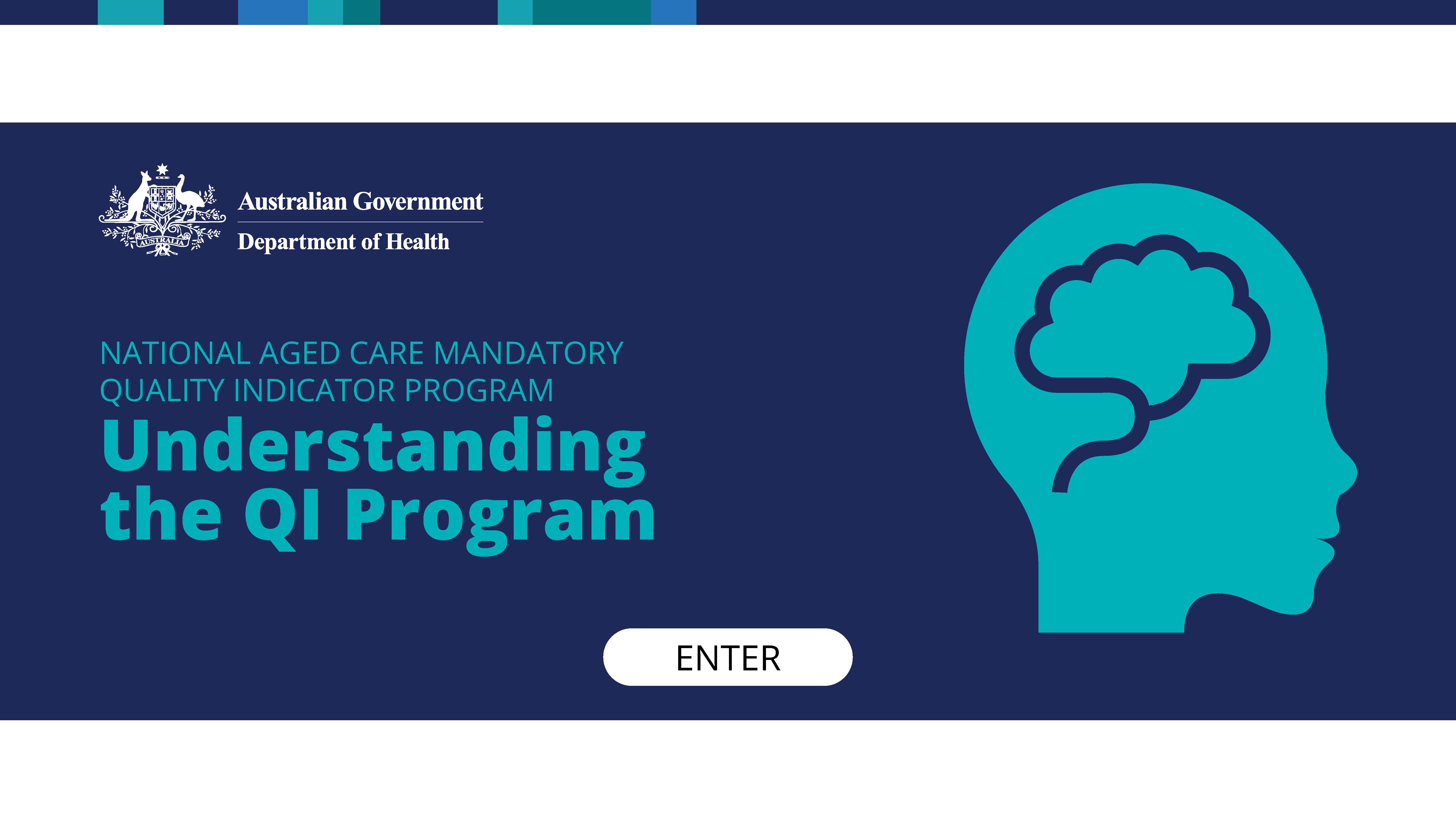
QI Program Module 1 – Understanding the QI Program
This interactive module is for government-subsidised residential aged care providers. It will help you understand the National Aged Care Mandatory Quality Indicator Program. -
QI Program interactive modules
These interactive modules are for approved providers of residential aged care services. The modules will support providers of residential aged care to understand the requirements of the QI Program. -
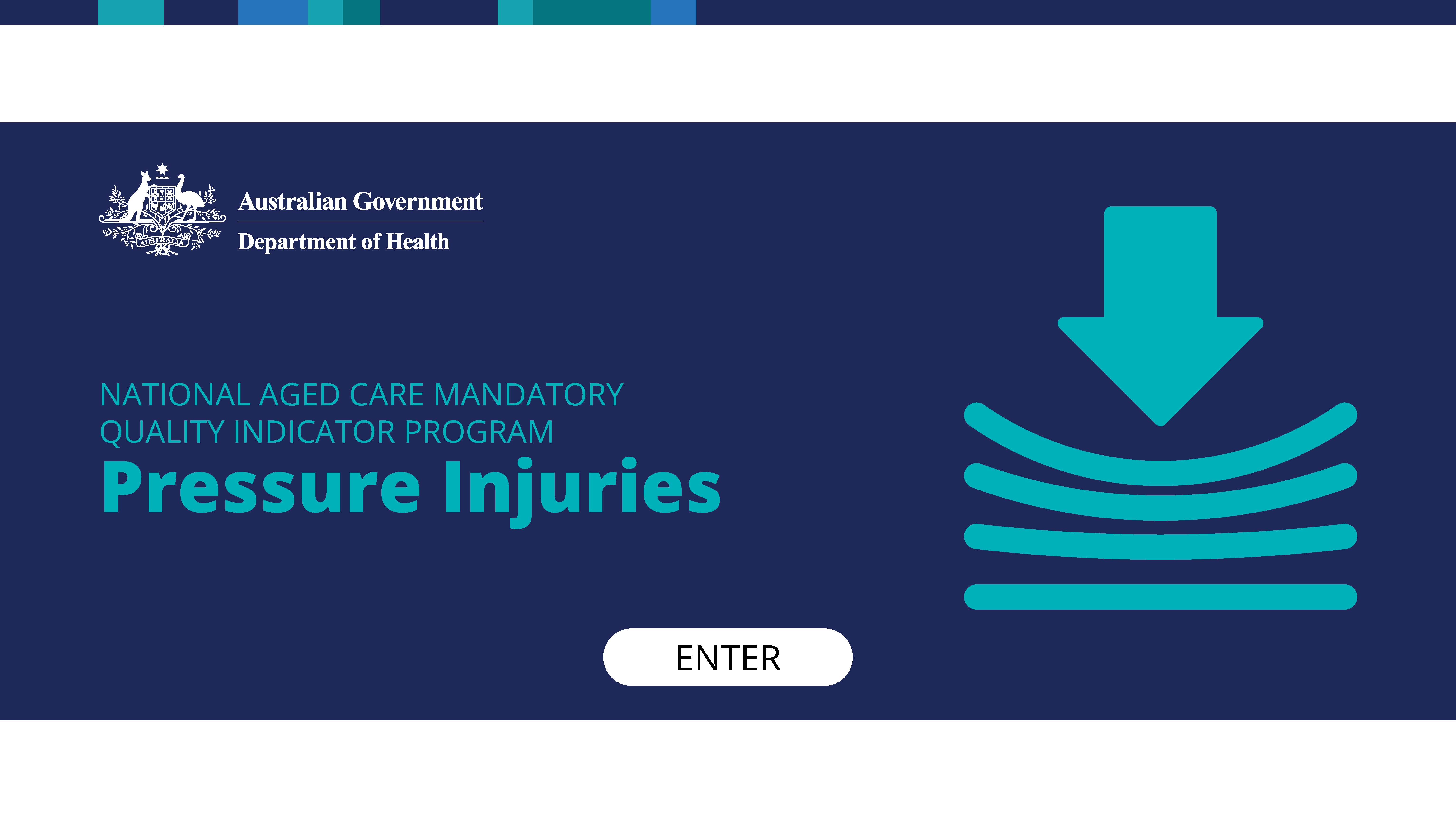
QI Program Module 2 – Pressure injuries
This interactive module is for government-subsidised residential aged care providers. It focuses on pressure injuries. -
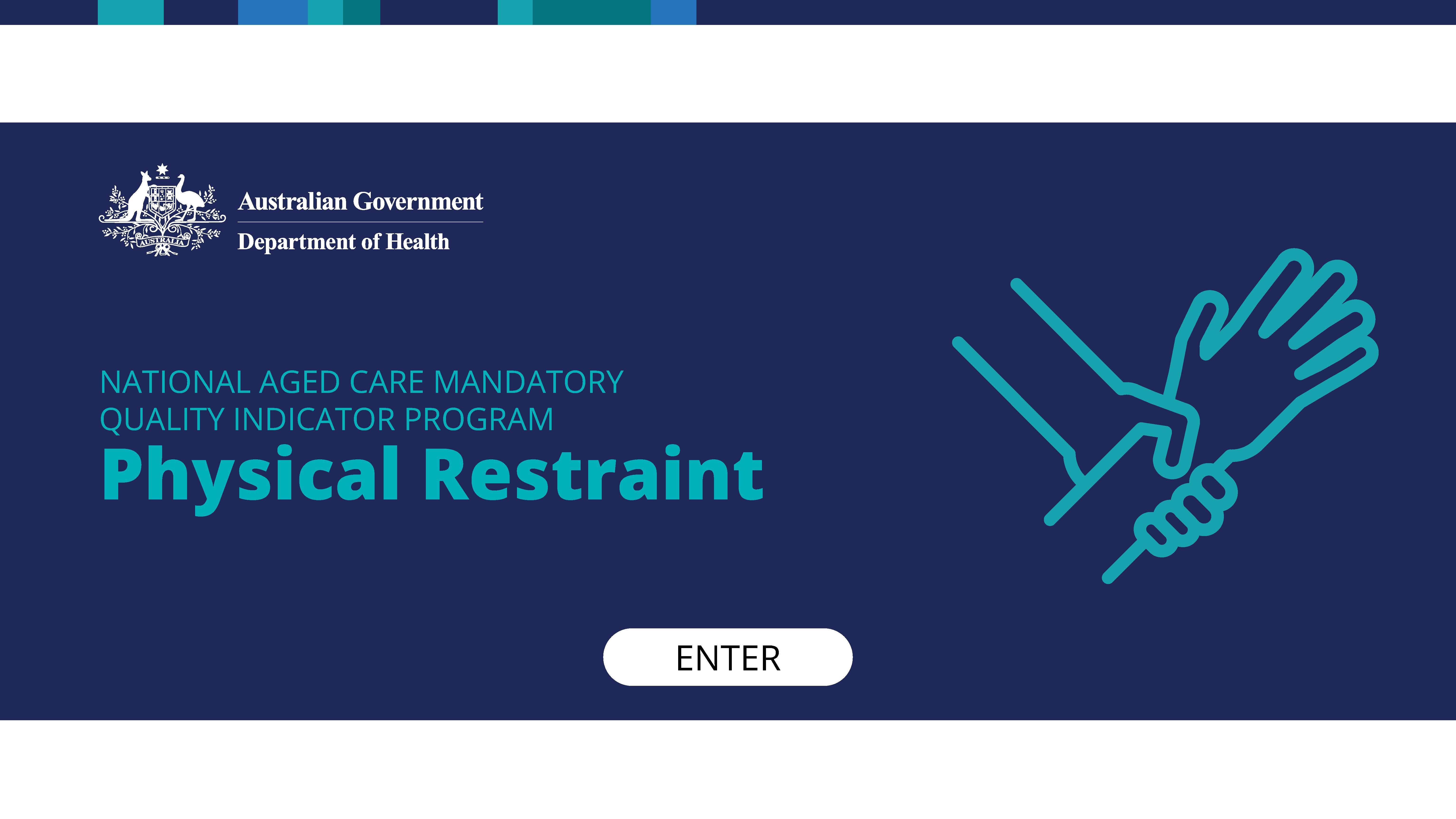
QI Program Module 3 – Physical restraint
This interactive module is for government-subsidised residential aged care providers. It focuses on physical restraint. -
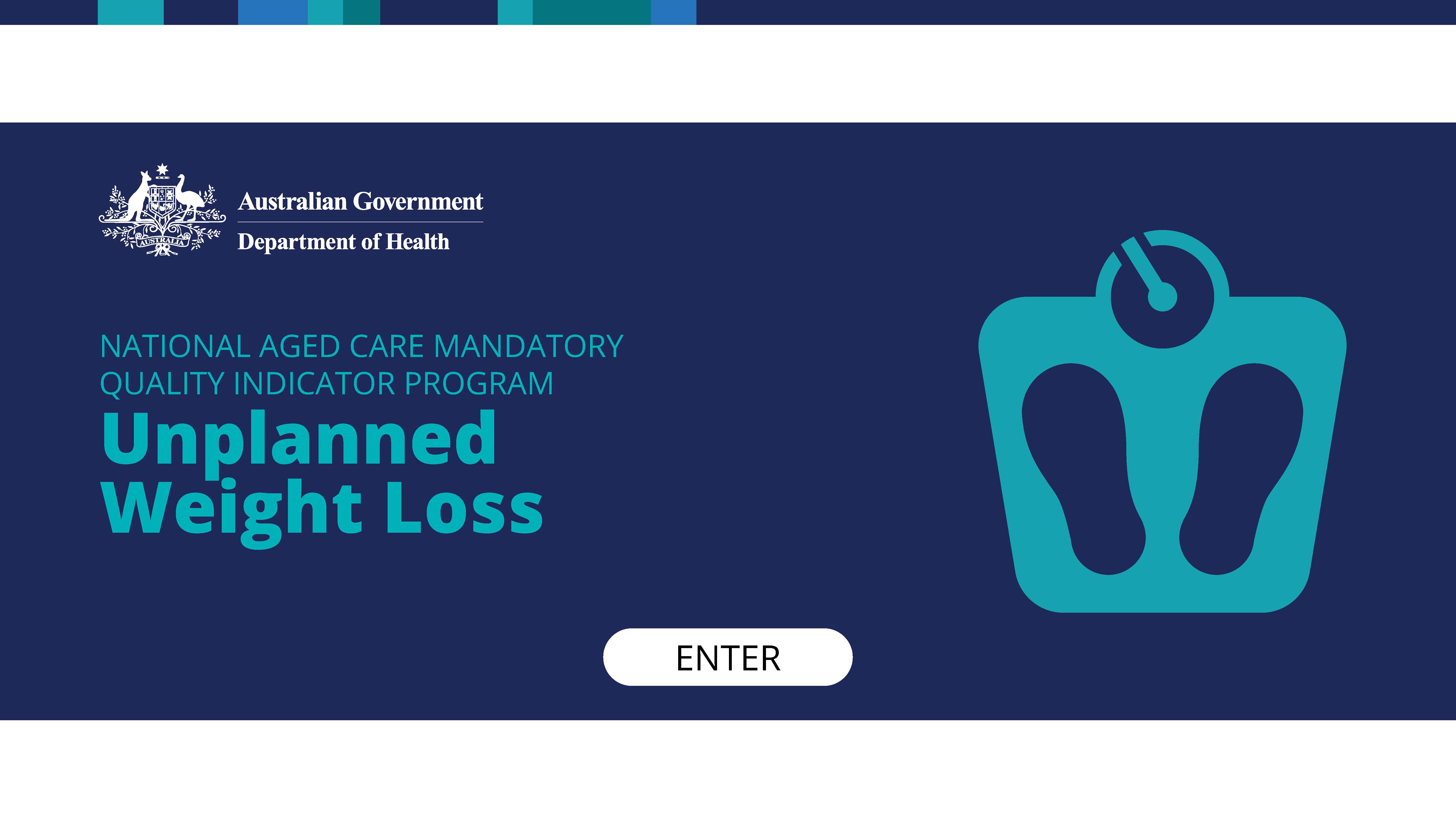
QI Program Module 4 – Unplanned weight loss
This interactive module is for government-subsidised residential aged care providers. It focuses on unplanned weight loss. -
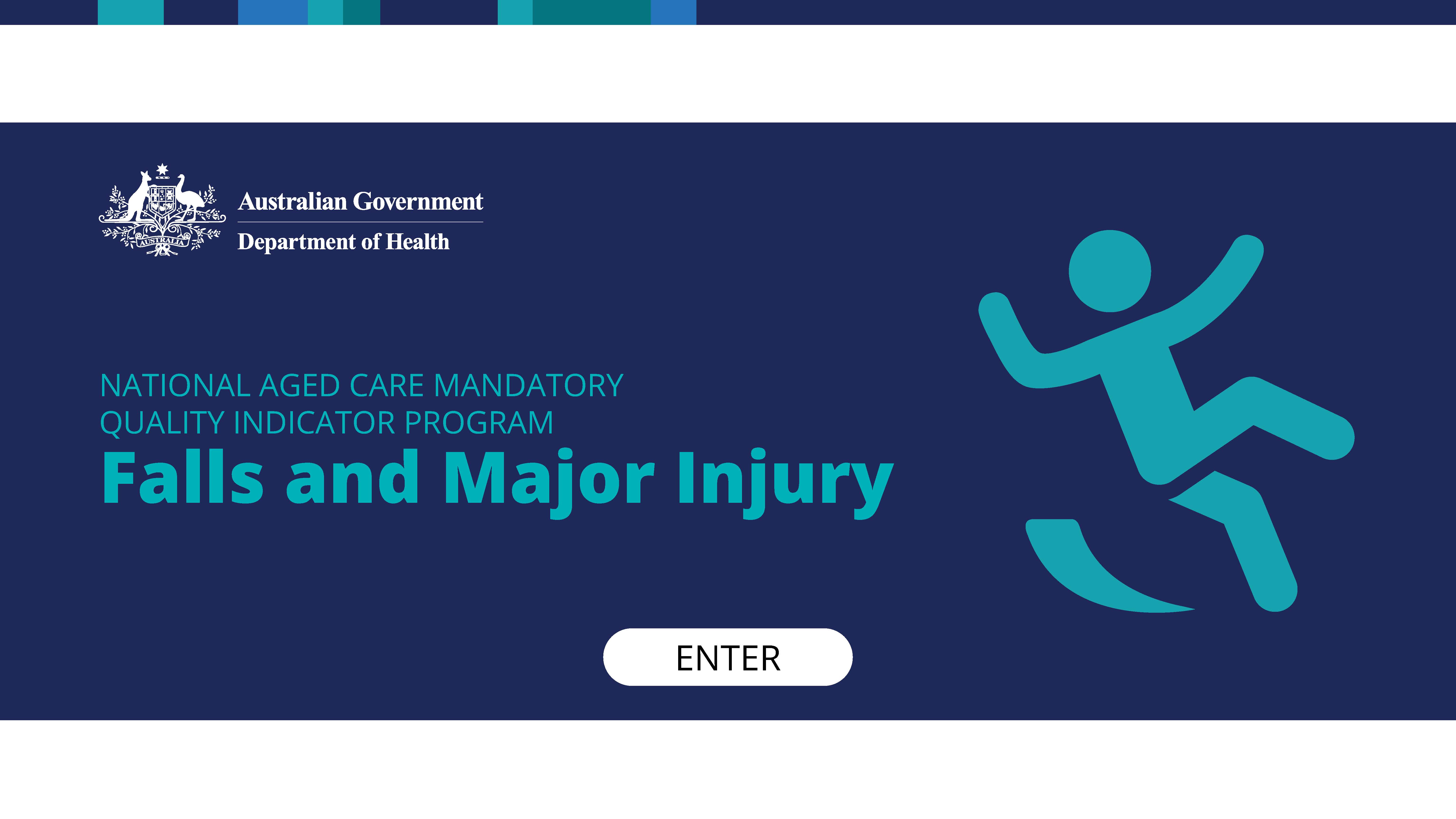
QI Program Module 5 – Falls and major injury
This interactive module is for government-subsidised residential aged care providers. It focuses on falls and major injuries. -

QI Program Module 6 – Medication management
This interactive module is for government-subsidised residential aged care providers. It focuses on medication management. -
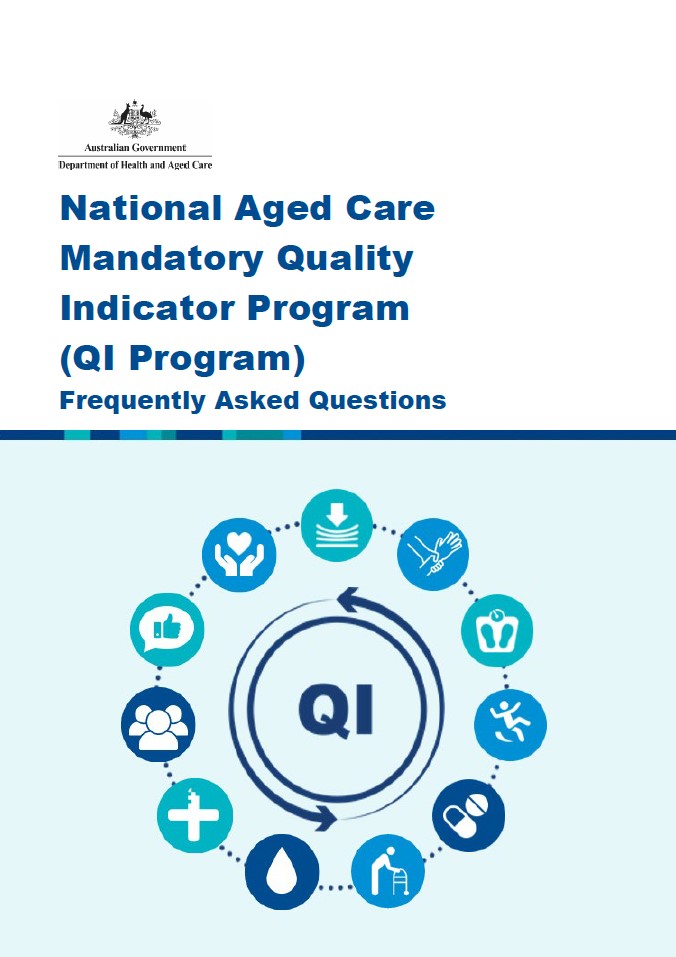
National Aged Care Mandatory Quality Indicator Program FAQs
This document is for government-subsidised residential aged care providers. The document details a range of frequently asked questions and answers to support residential aged care providers to understand and meet the requirements of the QI Program. -
QI Program fact sheets
This collection of information sheets are for government-subsidised residential aged care providers. The information sheets cover the definitions for each quality indicator and describes how the QI Program is relevant to them. -
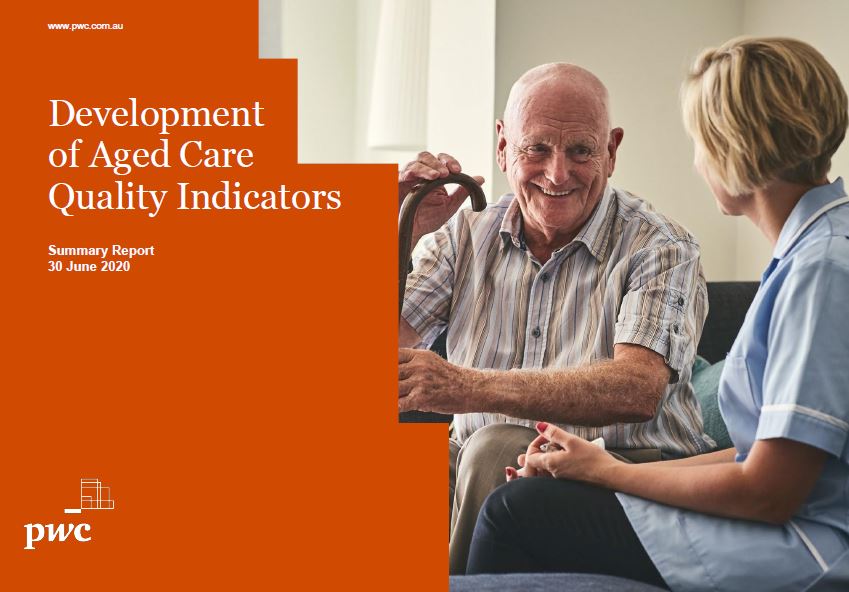
Development of Aged Care Quality Indicators – Summary Report
This summary report outlines the extensive work carried out in the development of the new and updated National Aged Care Mandatory Quality Indicator Program quality indicators, for implementation from 1 July 2021. -
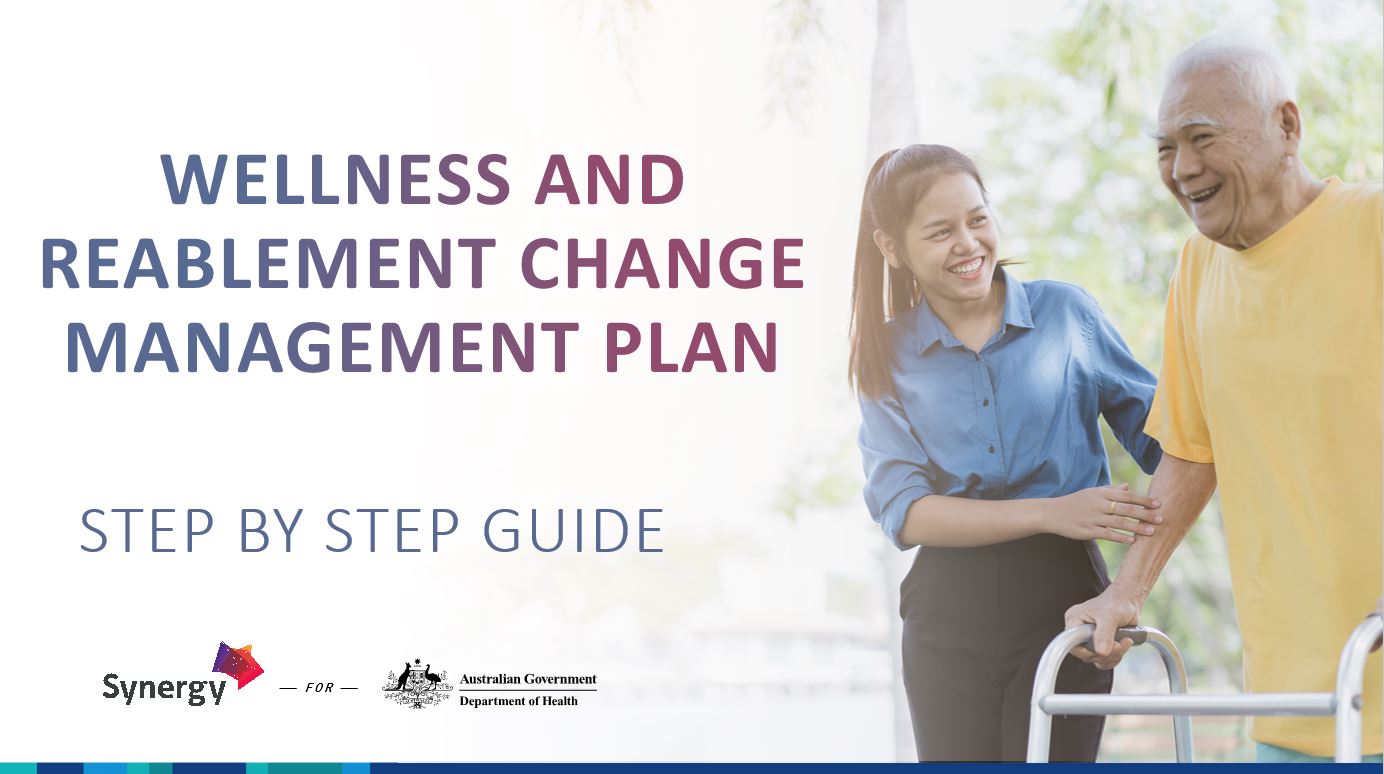
Change management plan step-by-step guide
Designed as a practical tool to assist management teams to plan and undertake change activities within your organisation. It provides a process to systematically identify and capture change activities through a change management template and provides examples to help get started. -
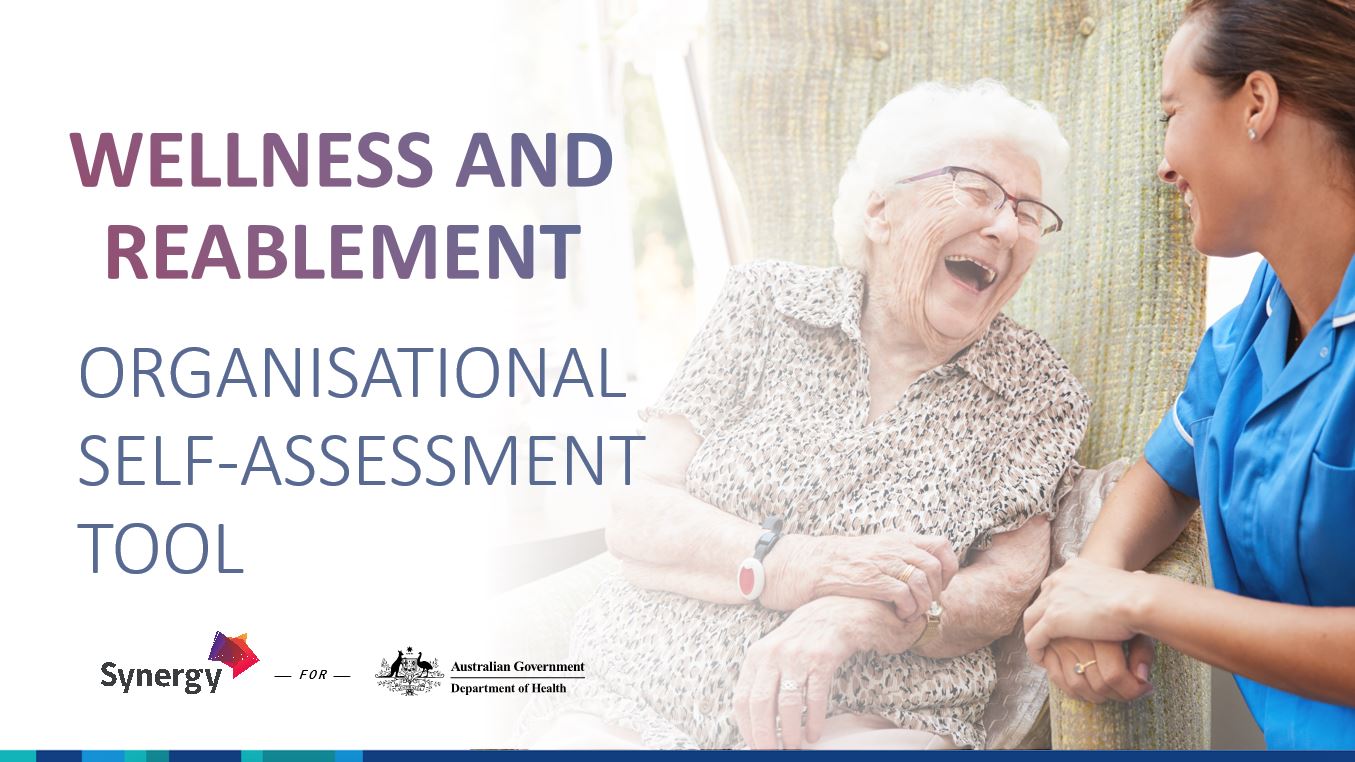
Organisational self-assessment tool
The self-assessment provides an overview of the elements you need to adopt wellness and reablement in your organisation. It includes scoring to measure the levels of organisational readiness, helps to identify areas of focus or improvement, and enables a baseline to be developed for future progress. -
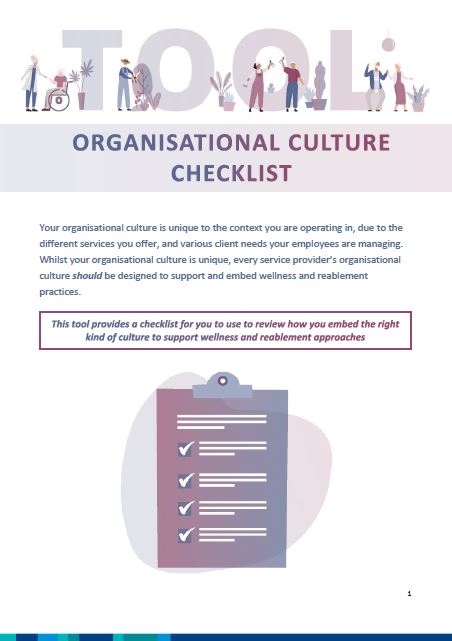
Organisational culture checklist
While organisations have their own style and way of doing things, all organisations should adopt wellness and reablement approaches as they support person-centred and high-quality care. This checklist helps to review how your organisation has embedded a culture supporting wellness and reablement. -
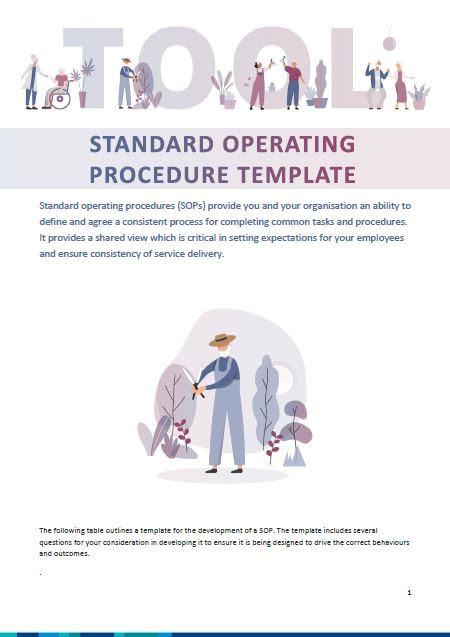
Standard operating procedure template
Standard operating procedures (SOP) provide an ability to define the steps and processes required to undertake a given activity. This can be critical in setting team expectations and to identify the requirements – such as training or coaching – needed to complete the SOP. -
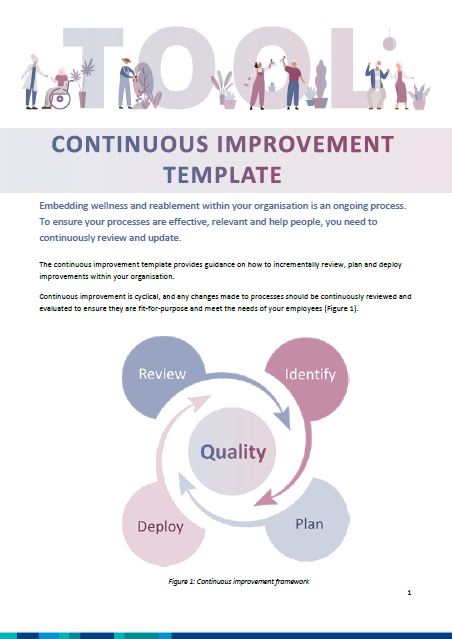
Continuous improvement template
This template steps out guidance on how to incrementally review, plan and deploy improvements within your organisation. Continuous improvement is cyclical and changes should be continuously reviewed and evaluated to ensure they are fit-for-purpose and will meet your organisational needs. -
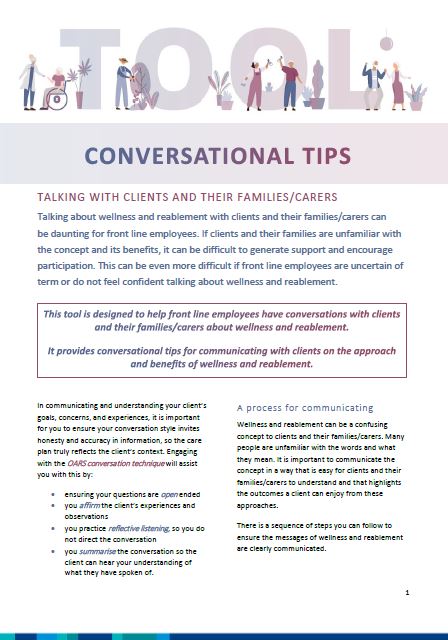
Conversational tips
How to have a conversation on wellness and reablement with the client (without using the word reablement) by instead defining and illustrating your delivery approach and how doing with, rather than for, can benefit the client. Includes benefits to clients, their carers or families. -

Principles for goal setting
In developing person-centred goals for clients, there is no one-size-fits all but there are certain guiding principles that can help you develop individual goals for your clients. The SMARTA approach is demonstrated with examples for each element, including a goal-setting checklist. -

Care planning checklist
Sets out the principles of effective care planning and includes a checklist to step out the client requirements. For example, their circumstances, goal, actions (and who is responsible: the client, family or carer, or the service provider), the frequency of services and review dates. -
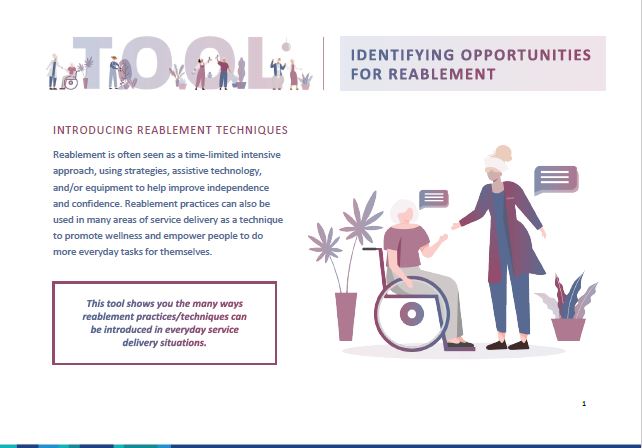
Identifying opportunities for reablement
Guidance to introduce reablement practices into everyday service delivery to help empower clients do what they can for themselves. This may involve different ways of doing a task or offering choices, which can increase confidence and motivation, in turn linking to increased social connectedness. -
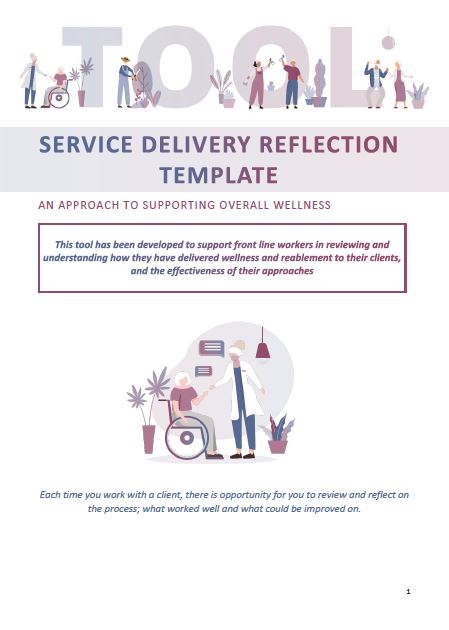
Service delivery reflection template
Through questions, this template aims to develop a greater understanding of the effectiveness of service delivery techniques in shifting towards wellness and reablement by considering what worked well, if there were barriers, what were they and what could be done differently to support clients. -
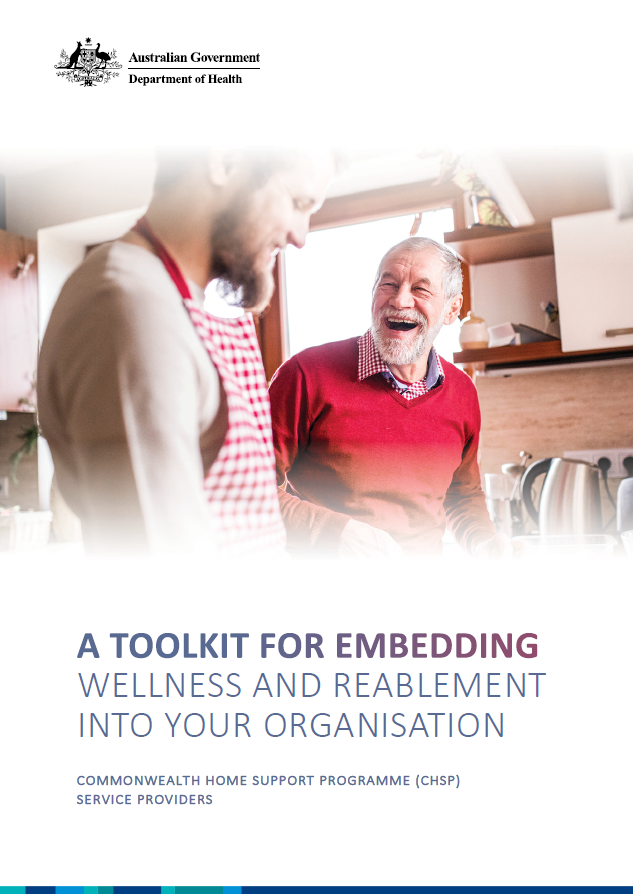
Toolkit for embedding wellness and reablement into your organisation
Provides service managers with support to implement change at an organisational level to embed, review and establish continuous improvement mechanisms on wellness and reablement. The toolkit is designed as a Practical Guide to Embed Wellness and Reablement which focuses on service delivery.

